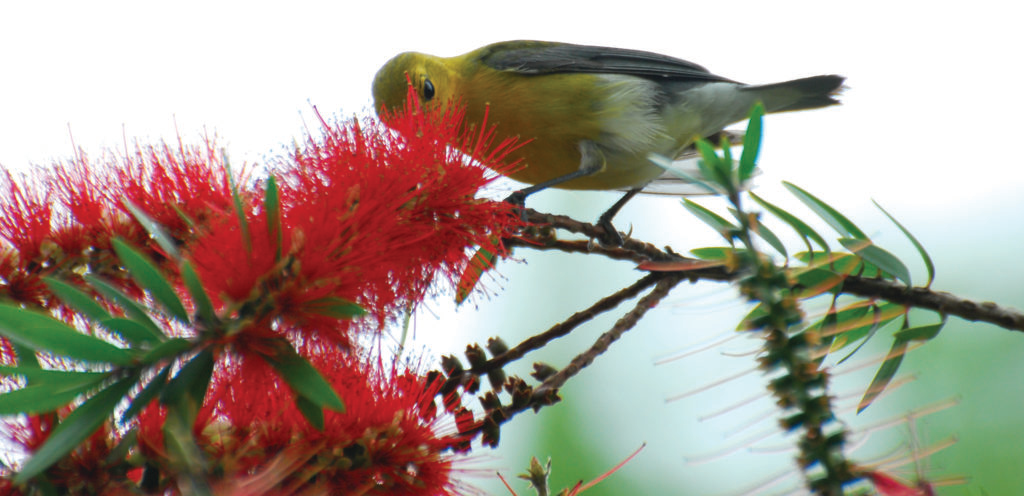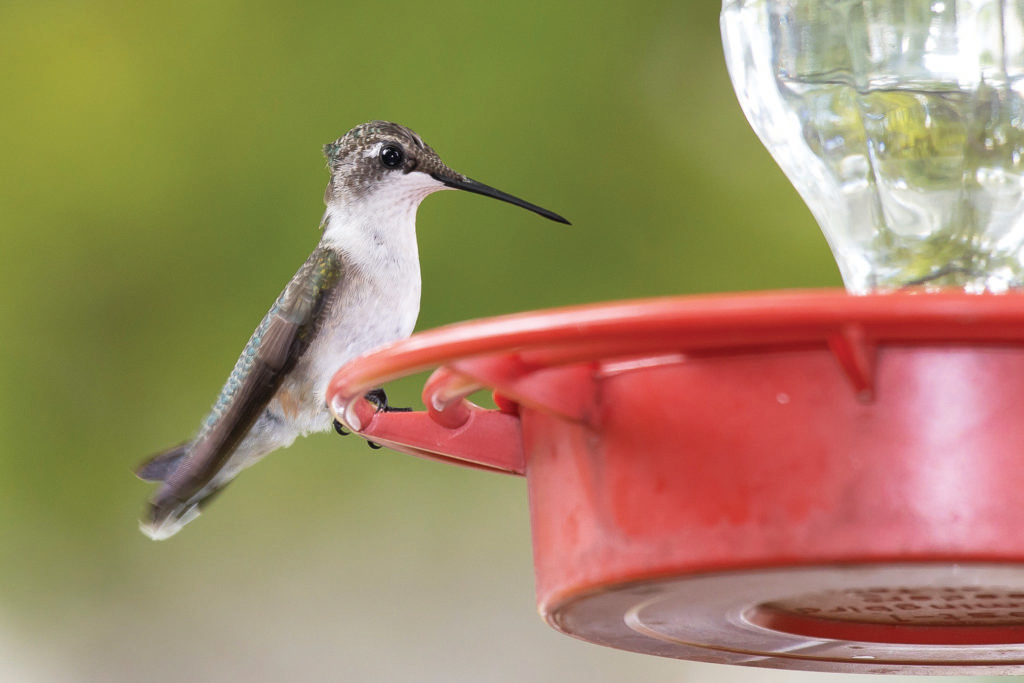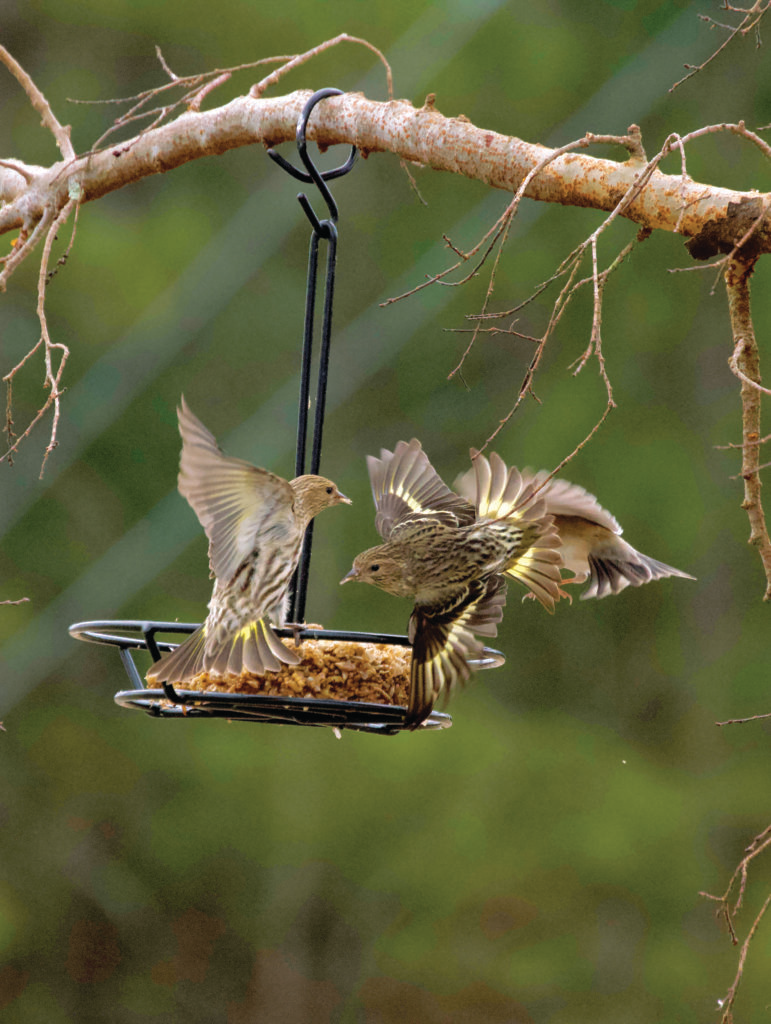Interest in birdwatching takes wing
By Katie Jackson

Photo by Katie Jackson
A “big year” in serious birding circles typically entails traveling across an entire continent trying to spot as many different bird species as possible in a calendar year. Last year, though, the inability to travel made 2020 a big year for birding close to home, which should be good news for us and for the birds.
Interest in birdwatching and backyard bird feeding, like numerous other outdoor and nature-based activities, began to rise during the early stay-at-home days of the pandemic, a trend evidenced by the significant uptick in online bird-related searches and sales of bird feeding equipment and supplies that occurred last year in the U.S. and worldwide.
“You put up one little feeder and next thing you know, you can’t wait to get up in the morning and see what’s out there.”
That trend “took wing” here in Alabama, too, says Christopher Joe, owner of Connecting with Birds and Nature Tours in Hale County. Not only did the popularity of his socially distanced outdoor excursions rise in 2020, so did questions about backyard birding.
“A lot of people who weren’t comfortable traveling or being around other folks turned to backyard birding as a way to get outdoors, get some fresh air and relax,” he says. In the process those folks learned what Joe already knew: “You don’t have to go around the world to see something amazing.”

According to Sarah Randolph, Alabama Audubon’s outreach and communications director, Alabama is an excellent place to experience birds. The state is rich in biodiversity, which provides abundant habitat for birds, and it’s located along the Mississippi Flyway, a vital flight path for many migratory neotropical bird species.
“We see over 400 species of birds in our state, whether they are year-round residents, breeders, winter visitors or passing through during spring or fall migration,” she says. Because of this, birdwatching can be a year-round activity everywhere in Alabama, from bustling cities to remote backroads.

Birdwatching is also a calming, healthful pastime that allows us to connect with nature and with other nature-loving folks, all of which have been especially important during the stressful, isolating days of the pandemic. And it’s affordable. While it helps to invest in a good pair of binoculars and a basic bird guidebook (recommendations for both are available at the Alabama Audubon site, alaudubon.org), they are not necessary. “All you need is an interest and a desire to learn more,” Randolph says.
Birdwatching isn’t just good for people, either. It’s a hobby that benefits the avian world by raising awareness of the important role birds play in our lives and the environment, which in turn increases interest in protecting birds, populations of which are declining at disturbing rates.
Seeing birds, saving birds
According to a study published in 2019, the population of breeding adult birds in North America (including the U.S. and Canada) dropped by 2.9 billion from 1970, a loss that scientists call “staggering.” Habitat loss is a major cause of these declines, exacerbated further by climate change and numerous other natural and human-caused threats.
But these threats can be mitigated, and knowledge is key to doing so, which is why Alabama Audubon, the Alabama Ornithological Society (aosbirds.org) and other conservation organizations offer myriad public education and outreach programs.

Photo by Christopher Joe
“Once you know something, you can’t ‘un-know’ it,” Randolph says. “Now that birds have gotten so much attention, we hope people will want to continue learning more about them and caring about how to help our avian friends thrive with the many obstacles they face.”
According to AOS president Geoff Hill, saving birds is all about seeing birds. “If you don’t see birds, you won’t care about them,” he says. “If we lose an interest in birds, we lose public support and that will be really bad for birds.”
AOS and Alabama Audubon offer lots of ways to connect with birds and fellow bird enthusiasts including birding walks and tours, classes, conferences and a wide range of educational resources. They also work with other organizations to support bird-related research and birding opportunities, such as the Alabama Birding Trails system, which Randolph said includes some 300 sites across the state, and the Black Belt Birding Initiative, a project aimed at developing bird-based ecotourism in Black Belt counties.

Volunteer opportunities and “citizen science” projects also abound including SwiftWatch, which monitors Alabama’s chimney swift populations, and Green Team, which monitors the state’s declining green heron populations. In addition, citizens can venture out to participate in the National Audubon Society’s annual Christmas Bird Count or semi-annual Coastal Bird Surveys.

Those wishing to birdwatch from home can also contribute through the Cornell Lab of Ornithology’s annual Great Backyard Bird Count (held each February) and by entering their feeder and neighborhood bird sightings into eBird (ebird.org), a database used to monitor bird populations worldwide.
One of the best ways to aid and enjoy birds, however, is to create bird-friendly yards, which is as easy as providing basic food, water and shelter to year-round and visiting bird species and eliminating threats such as pesticides, invasive species, free-roaming cats and large reflective windows.
Hill, an ornithology professor at Auburn University who hosts the Birding Better YouTube channel, believes feeding birds is an ideal way to connect with our fine feathered friends. “Birds get really habituated to people, so if you set up feeding stations close to where you sit, you can be two arm-lengths away and they will come right in.”

While there’s some evidence that feeding wild birds can affect their feeding and migration habits and spread disease, Hill and many other experts contend feeding birds is an ethical and beneficial pastime.
“Wild birds don’t seem to become overly dependent on feeders,” Hill says, adding that feeders are especially beneficial during periods of extremely cold temperatures, such as this year’s winter weather, and natural food shortages. And, while overcrowding at feeders can expose birds to diseases, Hill said proper cleaning and management of feeders and feeding areas will mitigate those problems (see bird feeding basics sidebar).
One warning, though: feeding birds can be addictive. “You put up one little feeder and next thing you know, you can’t wait to get up in the morning and see what’s out there,” Joe says.
And what’s out there may very well be a “spark bird,” that one bird species that ignites your inner birder and may someday lead you off on your very own big year.

Backyard bird feeding basics
Feeding birds is a fun, rewarding and educational activity for people of all ages. Here are a few tips to get you started, but you can learn more about best practices for maintaining feeders and a bird-friendly yard at allaboutbirds.org.
- Locate feeders at least 25 feet away from or within three feet of windows to avoid collision issues.
- Site feeders near bushes, trees or a brush pile where birds can take cover from predators.
- Use fresh, high quality seed to avoid waste and possible contamination issues.
- Store seed in clean, dry, air-tight containers.
- Clean feeders regularly (at least every month) using a mild unscented dish soap or a disinfecting solution of 1 part bleach to 9 parts hot water. Allow feeders to dry completely before refilling.
- Keep areas beneath feeders clean by raking up old seed, shells and droppings.
- Use a variety of feeder styles and food stuffs to draw in a more diverse array of birds.




